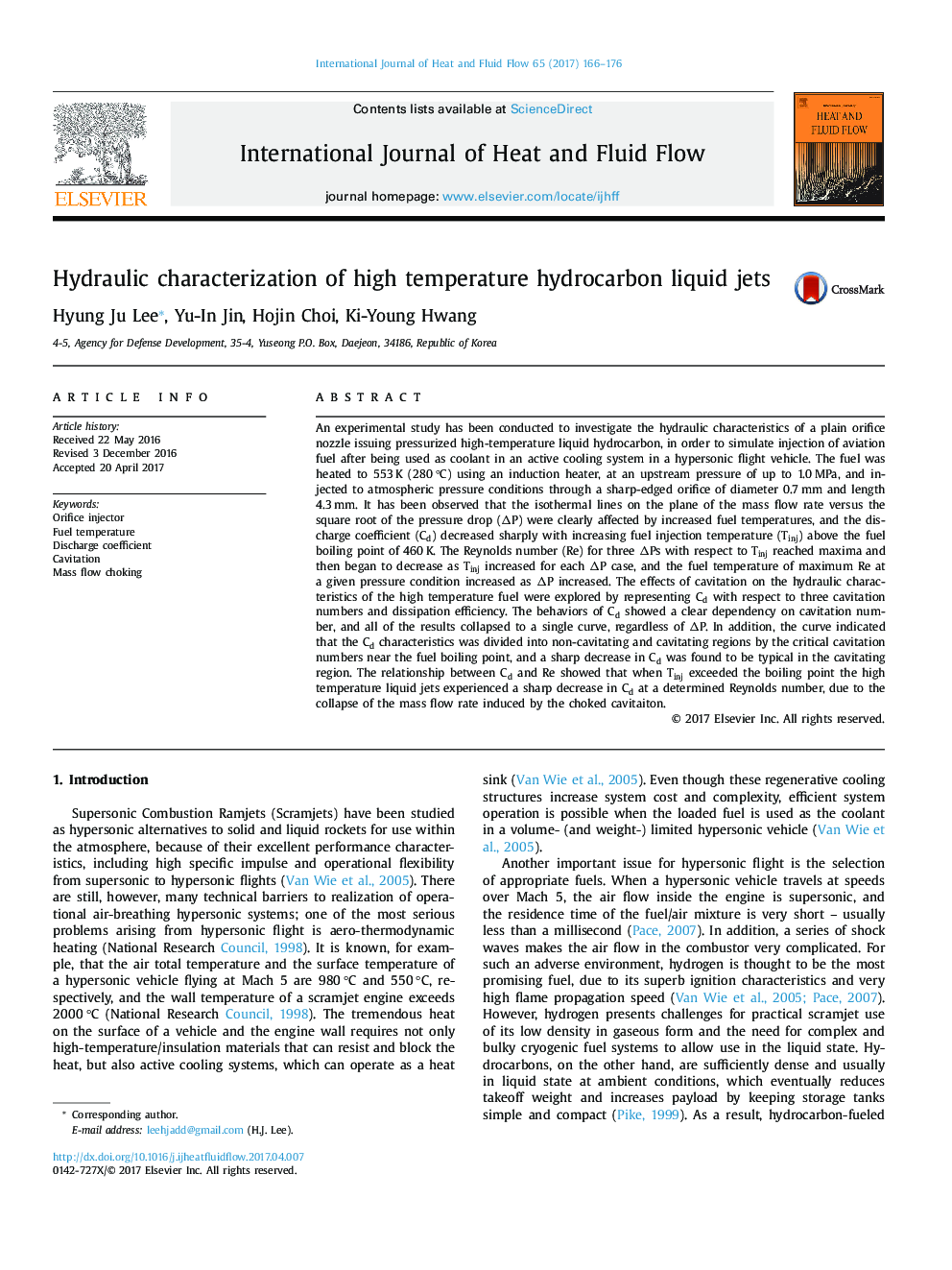| کد مقاله | کد نشریه | سال انتشار | مقاله انگلیسی | نسخه تمام متن |
|---|---|---|---|---|
| 4993125 | 1457614 | 2017 | 11 صفحه PDF | دانلود رایگان |
عنوان انگلیسی مقاله ISI
Hydraulic characterization of high temperature hydrocarbon liquid jets
ترجمه فارسی عنوان
مشخصات هیدرولیک جت های مایع هیدروکربن با درجه حرارت بالا
دانلود مقاله + سفارش ترجمه
دانلود مقاله ISI انگلیسی
رایگان برای ایرانیان
کلمات کلیدی
انژکتور سوراخ دمای سوخت، ضریب تخلیه، کاویتاسیون، جارو جابه جایی جریان خون،
موضوعات مرتبط
مهندسی و علوم پایه
مهندسی شیمی
جریان سیال و فرایندهای انتقال
چکیده انگلیسی
An experimental study has been conducted to investigate the hydraulic characteristics of a plain orifice nozzle issuing pressurized high-temperature liquid hydrocarbon, in order to simulate injection of aviation fuel after being used as coolant in an active cooling system in a hypersonic flight vehicle. The fuel was heated to 553 K (280°C) using an induction heater, at an upstream pressure of up to 1.0 MPa, and injected to atmospheric pressure conditions through a sharp-edged orifice of diameter 0.7 mm and length 4.3 mm. It has been observed that the isothermal lines on the plane of the mass flow rate versus the square root of the pressure drop (ÎP) were clearly affected by increased fuel temperatures, and the discharge coefficient (Cd) decreased sharply with increasing fuel injection temperature (Tinj) above the fuel boiling point of 460 K. The Reynolds number (Re) for three ÎPs with respect to Tinj reached maxima and then began to decrease as Tinj increased for each ÎP case, and the fuel temperature of maximum Re at a given pressure condition increased as ÎP increased. The effects of cavitation on the hydraulic characteristics of the high temperature fuel were explored by representing Cd with respect to three cavitation numbers and dissipation efficiency. The behaviors of Cd showed a clear dependency on cavitation number, and all of the results collapsed to a single curve, regardless of ÎP. In addition, the curve indicated that the Cd characteristics was divided into non-cavitating and cavitating regions by the critical cavitation numbers near the fuel boiling point, and a sharp decrease in Cd was found to be typical in the cavitating region. The relationship between Cd and Re showed that when Tinj exceeded the boiling point the high temperature liquid jets experienced a sharp decrease in Cd at a determined Reynolds number, due to the collapse of the mass flow rate induced by the choked cavitaiton.
ناشر
Database: Elsevier - ScienceDirect (ساینس دایرکت)
Journal: International Journal of Heat and Fluid Flow - Volume 65, June 2017, Pages 166-176
Journal: International Journal of Heat and Fluid Flow - Volume 65, June 2017, Pages 166-176
نویسندگان
Hyung Ju Lee, Yu-In Jin, Hojin Choi, Ki-Young Hwang,
